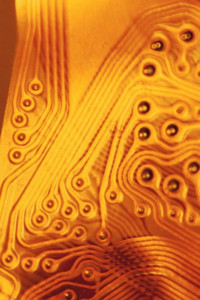- Home
- Products
- Process Measurements
- Extrel
- Semiconductor
Semiconductor
Mass spectrometry has long been a key technique in the development and production of semiconductors. The Semiconductor market requires:
- The use of high purity materials
- Tight control of the process
- Use of an analysis and control system with high sensitivity and resolution to adapt to chemistry changes
- High stability and repeatability of analytical techniques
Semiconductor Applications
Lithography
As Vacuum Ultra Violet (VUV) Lithography becomes a process application, the need to develop the next generation of vacuum compatible photoresists is critical. The development of these new photoresists depends on understanding their properties under vacuum. Our Flange Mounted Mass Spectrometers, the MAX and MAX-LT™ systems, offer the high sensitivity and resolution needed to fully characterize the material outgassing and what is produced during the breakdown of the photoresists.
MBE Monitoring
Analysis of Molecular Beam Epitaxy (MBE) requires the use of a Mass Spectrometer with very high sensitivity and low noise electronics to monitor not only the low flux rate of multiple molecular beams but also to perform Ultra High Vacuum (UHV) Residual Gas Analysis of the chamber.
Plasma and CVD Process Monitoring
Plasma Etch, Chemical Vapor Deposition (CVD) and Plasma-Enhanced Chemical Vapor Deposition (PECVD)applications require a thorough understanding of the complex chemistries involved in the processes. Also critical to the processes is the ability to monitor low-level components.
Scrubber / Burn Box Efficiency
For Semiconductor producers, the monitoring of the Destruction and Removal Efficiency (DRE) of Hazardous Air Pollutants (HAPs) and Greenhouse Gases has become increasingly important as laws (driven by public awareness and global agreements such as the Kyoto Protocol) and local pollution regulations have been significantly tightened. These strict standards often include increased penalties for emissions of a wide range of compounds including HAPs, halogenated volatile organic compounds (HVOCs), greenhouse gases, lead, and germanium. One way in which Extrel’s Mass Spectrometer systems are used to aid the effort to reduce emissions and ensure compliance with applicable regulations is to monitor the efficiency of abatement systems. Analysis allows for efficient development and monitoring of systems such as Scrubber Burn Boxes used for the abatement of combustible gases.

